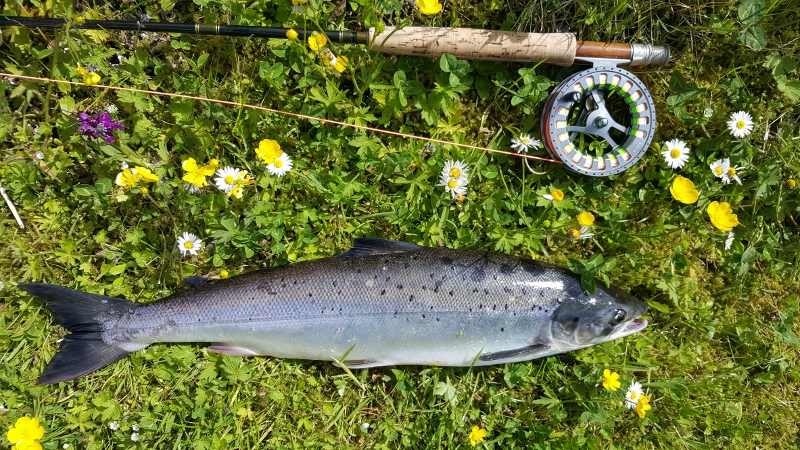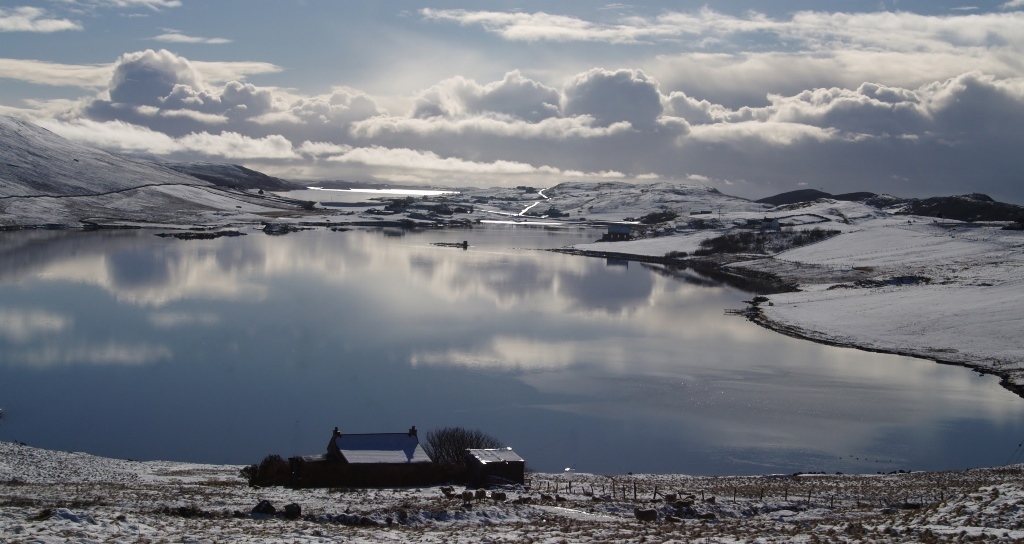Last Monday’s fishing trip to one of my favourite saltwater venues turned out to be very much a short and sweet experience. Weather conditions and tides looked to be just about right with a mild south westerly breeze and the tide at about half ebb. There had been some quite heavy rain on Saturday night so there was a bit of colour to the water but hopefully not enough to make the fish run the stream at the head of the voe. Perhaps there might even be a few fresh grilse in to liven things up!
I had arranged to meet my friend Davy near the head of the voe as Covid-19 had put paid to sharing transport. Over the years I have known him he has taught me an incredible amount about catching large brown trout and fishing in saltwater for both salmon and sea trout. His enthusiasm and optimistic outlook has turned many an unsuccessful day into a day to remember.
Arriving at the voe at around 8:30am I only had a couple of hours before I had to be back home to look after our ageing golden labrador. “Plenty time to catch a few” Davy said. We made for a deeper area where fish sometimes hold up on a receding tide. My set up comprised a 9ft 6″ Greys 6 piece #7 Travel fly rod, a home made shooting head floater and a two fly cast with foam daddy on the tail and a size 8 golden Wickhams Fancy on the dropper. A salmon of around 5lbs jumped over Davy’s line but didn’t seem to be interested in his flies. I cast out into the deeper water where there was a splash at my tail fly. I lifted the rod and was into a beautiful silvery grilse which jumped and stripped off my fly line and a good length of backing too. After a while I got it back around my feet and it ran off again even further than the first run. It jumped again before it finally began to tire and I slipped the net under a lovely fresh run grilse of around 4lbs. “What a great way to start the day” Davy said.
Davy waded across the shallows to fish some hot spots on the east side of the voe. He had barely got 50 yards when I let out a shout that I was hooked up to another grilse. After a spirited fight where the fish ran me down to the backing twice, I was able to slip the net under another fresh run fish of around the 4lb mark.
With less than an hour to go before i was due home I covered a few more areas where I have hooked up before carefully fishing every area where the water was darker. After having a little nip at the flies I cast again and my rod arched over and I was into another strong fish. There was no feeling of head shaking associated with salmon and after a spirited fight I returned a lovely sea trout of well over 2lbs. What an amazing couple of hours fishing! Time to head off home before Davy kicked me out of the water!
Both salmon fell to my tan coloured Foam Daddy Longlegs and the sea trout to a size 8 Golden Wickham’s Fancy.
I fished at the same location twice since and blanked both times! It just goes to show that there is a strong element of good fortune involved when it comes to fishing. That’s what makes fishing so exciting. The unpredictability of it all!




































